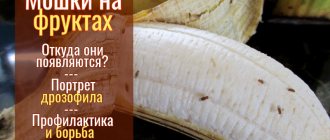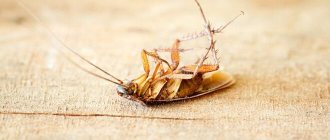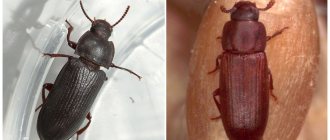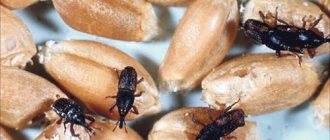Why do they appear?
These bugs can be seen everywhere:
- Under the baseboards.
- In places where bulk products are stored.
- In closets with clothes.
- Behind the radiators of the heating system.
- In carpets and runners.
- On indoor ornamental plants.
- Inside various furniture.
- Close to heating appliances.
- On the windowsills.
- In places where smoked and dried products, including meat, are stored.
- In areas where grains or peanuts are stored.
- Among the waste paper.
The larvae of carpet beetles are quite tenacious compared to adult beetles. They can live without food for several weeks. In places where it is dry, including behind baseboards, in corners, and also near the back wall of a furniture cabinet, all conditions for normal life have been created for them. Sunlight does not penetrate into such places, which creates comfortable conditions for these insects.
How do insects enter a person’s home?
There are many ways for such insects to enter an apartment or house. For example:
- Through open doors, windows and vents, if they are not protected by anything.
- With purchased or donated old books or furniture.
- With used items, if they were purchased secondhand.
- Inside the products if they were not stored correctly.
- With grains or cereals.
- With dried foods bought at the supermarket.
- From attics and basements, unless special services are watching them.
- With dried mushrooms or dried fruits, as well as medicinal herbs purchased at the market.
- With old carpets, also bought secondhand.
It is quite difficult to somehow prevent the appearance of these pests due to their small size. Since they are difficult to notice even upon inspection, since their brown color allows them to camouflage, they easily penetrate into a person’s home.
Small species of beetles
Small domestic beetles include skin beetles, grinders, and beetles. They damage various products, can feed on paper and spoil books. Carpet beetles also damage fur coats and woolen clothing.
In the photo there is a bread grinder, one of the smallest insects in the apartment:
This beetle reaches 1.5 mm in length and does not feed as an adult, although it makes passages in many products, damaging them. But its larva feeds on almost everything, including paper and fibers of semi-synthetic clothing.
The following photo shows a small flour beetle, specializing in cereals and flour. It is also good to eat bran:
Very small insects, also often found in apartments - carpet beetles, capable of making holes in fur coats and furs, “cutting” carpets and eating the bindings of old books:
All of the above small beetles can be quite difficult to remove from the apartment. If their larvae are found in food, all supplies should be thrown away, and bedside tables and shelves should be treated with insecticidal agents. In cabinets and on bookshelves, things and objects are treated with aerosol insecticides, and then it is useful to place anti-moth sections here, which are quite effective against beetles.
Types of small brown bugs with photos and names
Carpet beetles mainly appear in human homes, and anthrenuses live in old carpets. Compared to some insects, these bugs do not like excess moisture. Therefore, they are unlikely to be found in the bathroom, or in other rooms if there is high humidity in the home.
All owners should be aware of these bugs, since the insects are harmful and can cause serious damage if they are allowed to multiply indefinitely. In small quantities no serious damage can be expected.
Carpet beetles
Features of life:
- The diet of carpet beetles includes various organic matter, such as fur, leather, flowers, fluff, food, feathers, etc.
- The insects grow from 2 to 4 mm in length and are dark brown or black in color. The larvae are distinguished by a yellow-brown hue, as well as a rounded body with a narrowing.
- The grain beetle prefers to eat nuts, peanuts, cereals, grains, bran, and any kind of flour.
- The ham skin beetle penetrates into meat products, as well as smoked meats and dried fish. Carpet beetles tolerate temperature changes well, so they can live in basements, attics, bird nests, etc.
- The development period of the carpet beetle is from 6 to 12 months, from the laid egg to the adult beetle. The female is capable of laying up to hundreds of eggs.
- Beetles choose places where the sun's rays do not penetrate, and where it is dry and dusty.
On a note! These bugs are so small that many owners do not pay attention to them, much less realize how dangerous they are. If you do not immediately take measures to get rid of them, then after a while they will be everywhere in your home.
Skin beetle. Furry bugs in the apartment.
Anthrenuses
Description of insects:
- They grow in length from 1 to 4 mm and are almost black, and often brown in color.
- These bugs choose old carpets for their life activities.
- Insects are practically omnivores, since they can feed on crumbs, particles of epidermis, human hair, lint, and organic substances that they find on old carpets.
- It is also difficult to detect the larvae of these bugs, since they hide among the fibers.
- If these insects are few in number, they cannot cause serious damage. Despite this, they can cause allergies in people prone to this disease.
- If there are too many bugs, then the result of their vital activity can be spoiled things.
Skin beetle larvae
The larvae begin to look for food and feed intensively immediately after they are born. Before they grow up, they need to go through 5 stages of development. To undergo a molt, to turn from a caterpillar into a beetle. The length of the caterpillar at the last stage of development is about 7 mm. The body is covered with thick hairs, somewhat similar to silverfish. The larva of the genus Anthrenus likes to be on the surface of fabric coverings and clothing. Larvae of the genus Attagenus live in dry bulk foods. They can be found at the bottom of boxes, bags, on carpets, under parquet floors. Unlike adult leather beetles, the larva does not like bright light. It lives in shady areas, poorly lit or in darkness.
The number of molts and the total duration of larval development depends on nutrition, humidity and temperature. The most favorable range is from 20 to 30 degrees. Under unfavorable conditions, the larva may be in a state of relative dormancy when development stops. The last molt ends with pupation. The pupal phase lasts from 4 to 20 days. Young beetles, having emerged from the pupa, remain in the “cradle” for several days. Then they begin searching for a partner to mate with. Within a year, 1 generation of leather beetles appears.
The damage caused by these insects
Under certain conditions, carpet beetles and anthrenuses can cause significant harm. These pests chew drywall, wooden furniture, including electrical wiring. These insects can be found in any room of a person’s home.
Tiny insects can infect humans with various types of diseases as they move across various surfaces, sometimes dotted with pathogens. This is the case when talking about sanitation makes no sense at all.
Reasons for the appearance of bugs
The reasons for the appearance of bugs can be both external and internal factors.
External factors include:
- reduction of the nutrient medium in natural conditions;
- changes in climatic conditions (decrease in temperature and increase in humidity);
- ability to move long distances.
Internal factors can be:
- presence of a nutrient medium in the room;
- comfortable conditions for living and reproduction;
- placing stuffed animals or birds in the apartment;
- storage of a collection of insects (beetles, butterflies);
- home library (especially if you have old tomes);
- presence of pets (especially long-haired ones);
- neglect of preventive measures to combat the skin beetle.
Good to know! The summation of internal and external causes leads to the rapid spread of this pest in residential areas.
How to get rid of it: effective methods
First of all, you should determine the places where these pests accumulate. Therefore, you will have to look behind the baseboards, examine the furniture in the kitchen, closets with clothes, bookshelves and other places.
It is important to know! This stage requires a serious approach, because soon larvae will emerge from the eggs and then it will be much more difficult to deal with the pest.
After this, you need to decide on the means of struggle. To do this, you need to at least approximately know the degree of infection, as well as the conditions that allow the use of chemical control agents. If expectant mothers, small children, allergy sufferers or frail family members live in the apartment, then it is better to abandon such an idea.
In this case, it is better to give preference to folk remedies, although they are not as effective as chemicals. Often the situation develops in such a way that folk remedies do not cope with the task and one has to resort to the services of special services. This approach will allow you to quickly and reliably get rid of these bugs.
If you decide to fight insects on your own, then you need to be prepared for the fact that this may take more than one day and you will need to find temporary housing, since all family members will have to be evacuated from the apartment, along with pets.
The difficulty of self-processing is as follows:
- It is necessary to process a large area, so it can take a lot of time, without special equipment, and only professionals have it.
- You will have to check all food products, flowerpots, all drawers and all cabinets.
- It is imperative to do a general cleaning, removing old, unnecessary things, and also thoroughly vacuum all places.
- If you can get rid of dusty, dark, secluded places where these insects like to hide, then the task of getting rid of them will be much easier.
How to get rid of beetle larvae
How to remove bugs yourself
If you try hard, you can actually remove such insects on your own, but to do this you will have to do some work. For example:
- Arm yourself with a vacuum cleaner, put a disposable bag - a dust collector, vacuum all carpets and hard-to-reach places, after which it is better to take the carpets out into the sun or frost.
- Boil things in soapy water.
- Items made of leather or leatherette are best treated with chemicals.
- Treat upholstered furniture using a steam generator.
- Items made of wool and artificial materials can also be taken out into the cold.
- Make an audit of food supplies, reviewing everything, especially bulk food products.
- Remove all items from the cabinets where they are stored, after which the cabinets should be disinfected by wiping the inside with a soapy solution.
- Check wooden structures for gaps and cracks. It is better to seal all cracks and cracks with some kind of sealant.
Helpful Tips:
- After preparatory operations, all cracks and crevices in the floor, baseboards, all corners and hard-to-reach places, furniture are treated with either an aerosol or a special solution. It is better not to buy universal drugs, but to select those that are designed to combat harmful bugs. Such drugs exist.
- Treatment is carried out twice a week for one month. This approach allows you to get rid of bugs completely. After treatment, the floors are thoroughly washed and vacuumed.
- Boric acid shows good results in the fight against insects. You can buy the powder at the pharmacy and pour it into all the cracks and cracks. It is in such places that pests hide. Each sachet can contain only 10 g of powder, so you will have to buy several of these sachets. The advantage of boric acid is that it is safe for humans (non-toxic) and for domestic animals, but for many insects it is death, although not immediate. But this does not mean at all that it can be scattered anywhere without getting into it, especially if there are small children in the house. Nothing serious will happen, but diarrhea is guaranteed.
Fighting tree beetles
The most effective and simplest way is to take preventive measures, i.e. treating construction wood with special antiseptic agents, which will protect all structures from pests.
However, if such domestic beetles have already settled in a wooden house, then there are several recipes for their extermination. The peak of their activity occurs in May-June; it is during these months that the fight will be most effective.
Folk remedies for exterminating pests in wood:
- the use of petroleum jelly, which is injected with a syringe into the found passages and holes in the tree, you can fill them with wax;
- mix turpentine and kerosene in a ratio of 3:1 and pump into the cracks and passages;
- a mixture of naphthalene (10 g) and gasoline (100 ml) is applied to the surface of the wood with a brush;
- one of the effective ways is to warm up the rooms in the house with hot air (at a temperature of 60°C) or by freezing them in winter frosts (at -5...-10°C);
- fill the passages and crevices with a mixture of naphthalene, resin and carbolic acid;
- spraying a solution of copper sulfate with a syringe;
- Before starting work, it is better to clean the holes in the walls with wire.
In addition to traditional methods and solutions, experts recommend using chemicals:
- insecticides containing cypermethrin, organophosphorus compounds and lambda-cyhalothrin, the most effective of these chemicals is Fufanon, which should be treated at least 2 times with an interval of 2 weeks;
- aerosols Prima-71, Bichromat, Dichlorvos - are used to combat larvae in July.
Prevention measures
Despite the very small size of carpet beetles and anthrenus beetles, fighting them takes a lot of time. But the fight may turn out to be useless if a number of measures are not taken that will protect a person’s home from their repeated invasion. That's why:
- All windows must be equipped with mosquito nets.
- Install fine-mesh grilles on all ventilation systems.
- If a cat or dog lives at home, then you need to constantly clean up their fur, which is the source of food for the anthrenuses.
- Get rid of old, unnecessary things in a timely manner. Even if no one wears clothes, they attract dust, and this is a favorable environment for these tiny insects.
- If things are sent for storage, then before that it is better to treat them with a 0.005% solution of permin, an anti-pediculosis agent. This will protect things from the appearance of moth larvae and carpet beetles.
- From time to time, all things must be taken outside (to the balcony) at any time of the year, but it is better when it is sunny and frosty in winter, and in summer, when there is real summer heat. This kills both larvae and adults. This simple procedure will help protect things from infection by many insects.
- After using a vacuum cleaner, it is advisable to take the dust bags out into the cold. Particular care should be taken to vacuum carpets and rugs, as well as thick curtains, covers on chairs and sofas.
- Periodically clean upholstered furniture using a steam generator, which will help get rid of small bugs hiding in the folds and seams of the upholstery material.
- Use garlic or bay leaves to repel insects, which can simply be placed in containers where food is stored.
- In order to block the paths of entry into the home for insects, it is necessary to seal all the cracks, cracks and just holes that often occur in rooms such as the kitchen, bathroom, and even in rooms. The builders could have left them when they were making the heating, water supply, gas and sewage systems.
The appearance of any insects, especially in large numbers, in a person’s home can be considered an emergency. Every housewife should have information about what insects can appear in the apartment and know what they look like. In most cases, these are harmful and dangerous insects, since they intend to spoil everything, in the literal sense of the word. In addition, they can infect household members with various, and sometimes very dangerous, ailments. Therefore, if you suspect the appearance of any pests, you should immediately try to get rid of them in any available way.
It is better to resort to chemicals in rather difficult situations when it is not possible to get rid of pests by other means. Most likely, the fight is being waged in the wrong direction and not in all possible, sometimes quite simple ways that require consistency, but some owners are simply not ready for this. You should also remember that it is better to take care in advance to ensure that pests cannot enter your home. Of course, it is impossible to completely protect yourself from this, but you should not leave any chance for pests and parasites.
Who are skin beetles?
Specialist coleopterologists classify this small insect as a member of the order Coleoptera. It has a brown sometimes black color. The insect is small oval in shape. The entire body is covered with short, stiff hairs.
Brown beetles are divided into four large classes, each of which contains from two to eight species. According to this classification, there are more than 600 species.
Types of bugs, what do they eat?
The following types are most common in apartments:
- ham (the most common is almost black in color);
- carpet (uses organic compounds);
- fur coat (has a black color with several white dots on it. Prefers crumbs, food scraps, table waste. The adult lives using accumulated nutrients);
- Kozheed Smirnova (brown in color. Settles in wooden structures: door and window frames, wooden floors and wall decoration, in furniture elements);
Any household items serve as a breeding ground for them: from organic compounds (leather goods, fabrics, books, furniture, carpets, waste products) to synthetics.
The diet includes: cardboard, felt, rubber, cable braid, asbestos structures. Capable of eating indoor plants and flowers. They can cope with almost all plant foods.
The grain beetle is capable of destroying nuts. Various types of grains and cereals, bran flour and products made from them. Ham specializes in meat and fish products.
Let's celebrate! Despite this omnivorous nature, small brown bugs are able to go without food for a long time. It has been established that this period can last up to five years. In this case, their biological processes slow down, but they remain viable.
Book louse
Also called the book hay eater. They have a long body and a large head. They love warmth and high humidity, so if they are detected, it is recommended to reduce the humidity in the room.
Book lice are common in nature - they live in bird nests and rodent burrows. Rarely found in homes - mainly in libraries and museums. These insects feed on plant and animal remains, as well as paste. In the old days they caused a lot of trouble because paste was used in the production of books. They are not interested in modern books, since synthetic glue has begun to be used. They are not dangerous to humans and animals.
Bed bug in the sofa
Bed bugs in the sofa are a fairly common problem in apartment buildings in big cities. The insect does not fly, but crawls, belongs to the class of bloodsuckers , and therefore is very annoying to a person, biting him at night. Bed bugs do not appear during the daytime and come out to hunt at night when people are sleeping. On the body after sleep you can notice entire “paths” of their bites. The size of their bodies ranges from 3 to 8.4 mm, the color of the bugs is recorded from a dirty yellow tone to a red or dark brown hue. It gets into the house from neighbors, is brought with someone else's clothes, which are carelessly thrown on the sofa, and so on.
It is very difficult to remove such a pest, but there are options for how to do this - you need to wash all the laundry, wash the sofa thoroughly, or use a special steamer brush , which is usually used to clean carpets. In this case, a drug should be added to the water that kills not only the bedbugs themselves, but also their larvae. All ventilation ducts, window sills, window frames, balconies, and entrance door frames also need to be treated. In this case, you can suggest a couple of drugs that can save the situation and prevent you from throwing out the sofa.
Cucaracha
- The manufacturer is Russia .
- Released in concentrate.
- Bottle volume – 1 liter.
- Active substances – malathion (10%).
- Moderate toxicity .
- Can be stored for 2 years.
- Average price – 1550 rubles.
BUY
Force Site
- Published by Russia .
- Product form – concentrate.
- Canister with a volume of 0.5-5 l.
- The active substance is fenthion (10%).
- Toxicity is average.
- Saving period – 4 years .
- The price on the disinfectant market is 1000 rubles for 500 ml, 1550 rubles for 1 liter, 6350 rubles for 5 liters.
BUY
And here is a new sofa with bedbugs from the store:
Flour beetle
These are small reddish-brown bugs a few millimeters long. They spoil cereals, flour, dried fruits. They usually enter the home along with contaminated products.
If a beetleworm is detected, you must throw away all the stocks of cereals, pasta and dried fruits in the house. These bugs can also live in baseboards and window frames, so after eliminating the products you need to thoroughly rinse all surfaces with a vinegar solution. Skirting boards and other surfaces that do not come into contact with food can be treated with chemicals.
Procedure for detecting bugs in the kitchen
If at least one bug was found, then it is necessary to inspect all products for the appearance of larvae or other individuals. At the slightest suspicion of the presence of bugs, cereals or other products must be disposed of. But first things first.
PHOTO: yaplakal.com A single bug will organize a whole colony of its own kind within a couple of days
Related article:
Habitats of pest beetles
Despite the fact that each type of insect has certain food preferences, you will have to check everything, including cookies, nuts and sweets. After all, if there is a shortage of their favorite product, beetles will move to new places, regardless of taste preferences.
If several beetles were found in one of the cabinets, it means the owner is on target. Insects do not go far from their homes, that is, the colony is somewhere nearby, in the same cabinet.
PHOTO: stroylenproekt.ru What wonderful Kuban, and most importantly, elite rice from the nearest store
Don't rely on sealed packages. The flour beetle, like the bread grinder, can easily gnaw through the shell, regardless of the material. This means everything will have to be checked. Well, or, as an option, throw it in a landfill, leaving not a crumb or grain in the house.
By the way, the inspection must be very thorough. The fact is that a bug like the bread grinder is a master of camouflage. He lives inside the grain he has gnawed out, eating up the remains. And the grinder emerges from its shell only when necessary to change its “edible house.”
PHOTO: shkpxxpx.glist.ru.net After a beetle has visited the grain, only an empty shell remains











